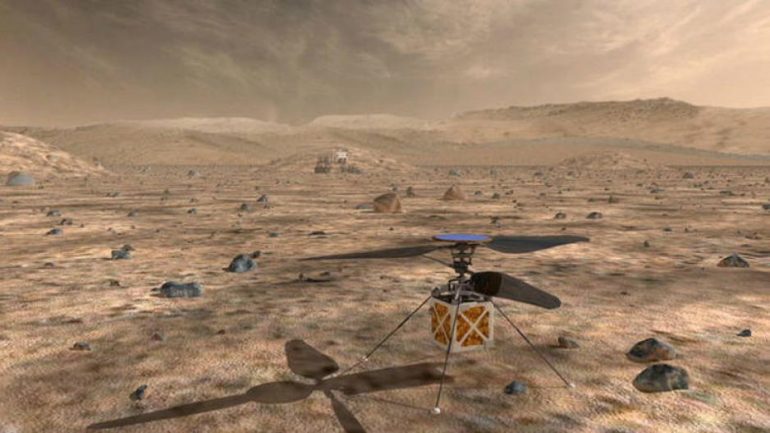The US space agency (NASA) has found no traces of ancient or modern microbial life on Mars, but has made two discoveries that bring this possibility closer to the future - though without yet crossing the threshold of certainty.
Unshakable evidence that confirms for the first time beyond any doubt the presence of organic matter on the soil of Mars, brought to light the American rover Curiosity. In addition to organic matter, it has also been confirmed that not only a basic organic chemical, methane, exists in the Martian atmosphere, most likely from some unknown source on the planet's surface or subsoil, but also shows strong seasonal fluctuations.
The two interrelated discoveries, presented in two separate publications in the journal Science, are considered particularly important in the field of astrobiology, that is, the possibility of discovering life beyond Earth, which is why NASA considered it appropriate to promote them by holding a press conference. The combined presence of organic matter in the soil and methane in the atmosphere increases the chances of ancient microorganisms on Mars.
The collection of samples made by the rover's drilling rig from mud (mud rocks) at Gale Crater and their subsequent analysis by Curiosity's SAM (Sample Analysis at Mars) scientific instrument revealed a number of different organic molecules, ie based on coal.
In 2015, there were first indications from Curiosity of limited amounts of organic matter on Mars, but some doubts remained. This time, new samples from two parts of the same crater, believed to be about three billion years old, have shed light on the presence of several organic substances, some of which are volatile.
Some such substances, which have also been found on Earth, are thiophene, methylthiophene, methanothiol and dimethylsulfide. The researchers estimate that these molecules are part of other larger organic molecules that existed on Mars. They stressed, however, that at present they cannot know whether the origin of this organic matter is biological, geological or meteoric, but they do not rule out the first case.
Regarding the methane of the Martian atmosphere, the measurements show significant seasonal fluctuations in its concentrations. In the past, small amounts of methane had been detected on the neighboring planet and its origin was a source of intense controversy. Most of the methane on Earth is of biological origin (from microorganisms), but other abiotic explanations have been proposed for Martian methane, such as its space origin.
The new data comes from atmospheric measurements during three Martian years (55 Earth months) made by Curiosity. It is revealed for the first time that methane levels on the "red planet" show a strongly seasonal cycle, ranging from 0,24 to 0,65 parts per billion (ppb). The highest concentration is recorded every year towards the end of summer in the northern hemisphere of Mars.
Scientists are now ruling out various possible sources of methane. They consider it possible that large amounts of this gas are trapped and stored in the Martian subsoil in water-based crystals, called encapsulation compounds or flakes. According to this theory, seasonal changes in planetary temperature are likely to cause fluctuations in the release of methane into the Martian atmosphere. In any case, further effort will be made to understand the methane cycle on Mars.
The now certain detection of organic molecules and methane on Mars increases the chances that the neighboring planet once hosted life. Curiosity had shown since 2014 that Crater Gale had habitable conditions about 3,5 billion years ago, coincidentally at a time when life on Earth was beginning to grow in the form of microorganisms.
Therefore, although there is still no evidence, it is not unlikely that there was some form of life on Mars then, since it is now a given, after the new findings, that organic matter existed in its territory at that distant time.
Life on Earth uses and produces four basic types of organic matter: carbohydrates, lipids, proteins, and nucleic acids. Each of them is made up of smaller organic molecules, such as sugars, amino acids and nucleotides. Assuming that (hypothetical) Martian life would not be much different from Earth, scientists are now focusing on finding these cornerstones of life on Mars.
NASA announced that Curiosity ("Curiosity"), which had stopped drilling and collecting samples in October 2016 due to a mechanical problem, had just resumed its work. The rugged scientific rover, which arrived on Mars in August 2012, continues to climb slowly but steadily to Mount Sharp, a mountain about 5.000 meters high in the center of Gale Crater.
